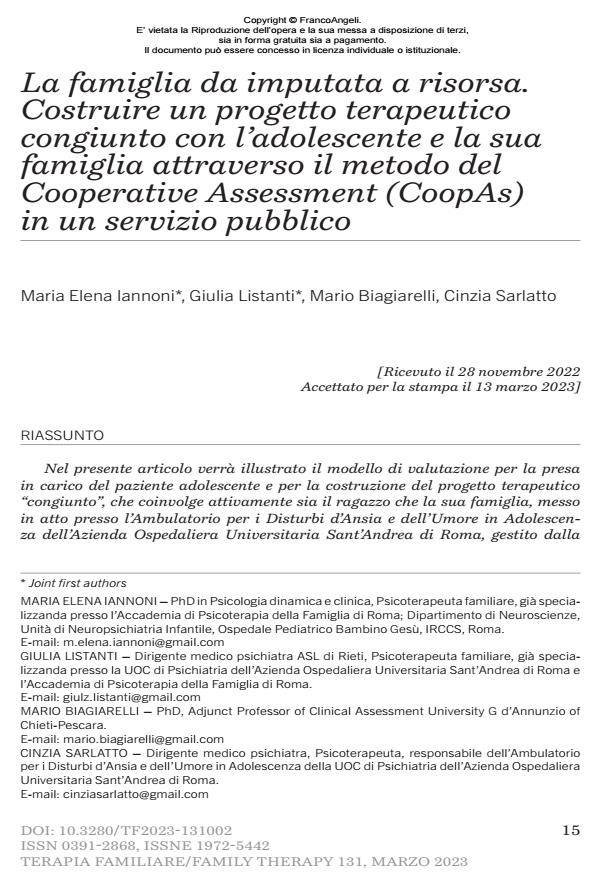La famiglia da imputata a risorsa. Costruire un progetto terapeutico congiunto con l’adolescente e la sua famiglia attraverso il metodo del Cooperative Assessment (CoopAs) in un servizio pubblico
Titolo Rivista TERAPIA FAMILIARE
Autori/Curatori Maria Elena Iannoni, Giulia Listanti, Mario Biagiarelli, Cinzia Sarlatto
Anno di pubblicazione 2023 Fascicolo 2023/131
Lingua Italiano Numero pagine 14 P. 15-28 Dimensione file 753 KB
DOI 10.3280/TF2023-131002
Il DOI è il codice a barre della proprietà intellettuale: per saperne di più
clicca qui
Qui sotto puoi vedere in anteprima la prima pagina di questo articolo.
Se questo articolo ti interessa, lo puoi acquistare (e scaricare in formato pdf) seguendo le facili indicazioni per acquistare il download credit. Acquista Download Credits per scaricare questo Articolo in formato PDF

FrancoAngeli è membro della Publishers International Linking Association, Inc (PILA)associazione indipendente e non profit per facilitare (attraverso i servizi tecnologici implementati da CrossRef.org) l’accesso degli studiosi ai contenuti digitali nelle pubblicazioni professionali e scientifiche
Nel presente articolo verrà illustrato il modello di valutazione per la presa in carico del paziente adolescente e per la costruzione del progetto terapeutico "congiunto", che coinvolge attivamente sia il ragazzo che la sua famiglia, messo in atto presso l’Ambulatorio per i Disturbi d’Ansia e dell’Umore in Adolesce za dell’Azienda Ospedaliera Universitaria Sant’Andrea di Roma, gestito dalla Dott.ssa Cinzia Sarlatto e dalla sua equipe di psichiatri, psicologi clinici e psico- terapeuti in formazione.
Parole chiave:adolescenza, ansia, depressione, assesment psico-diagnostico, famiglia
Maria Elena Iannoni, Giulia Listanti, Mario Biagiarelli, Cinzia Sarlatto, La famiglia da imputata a risorsa. Costruire un progetto terapeutico congiunto con l’adolescente e la sua famiglia attraverso il metodo del Cooperative Assessment (CoopAs) in un servizio pubblico in "TERAPIA FAMILIARE" 131/2023, pp 15-28, DOI: 10.3280/TF2023-131002